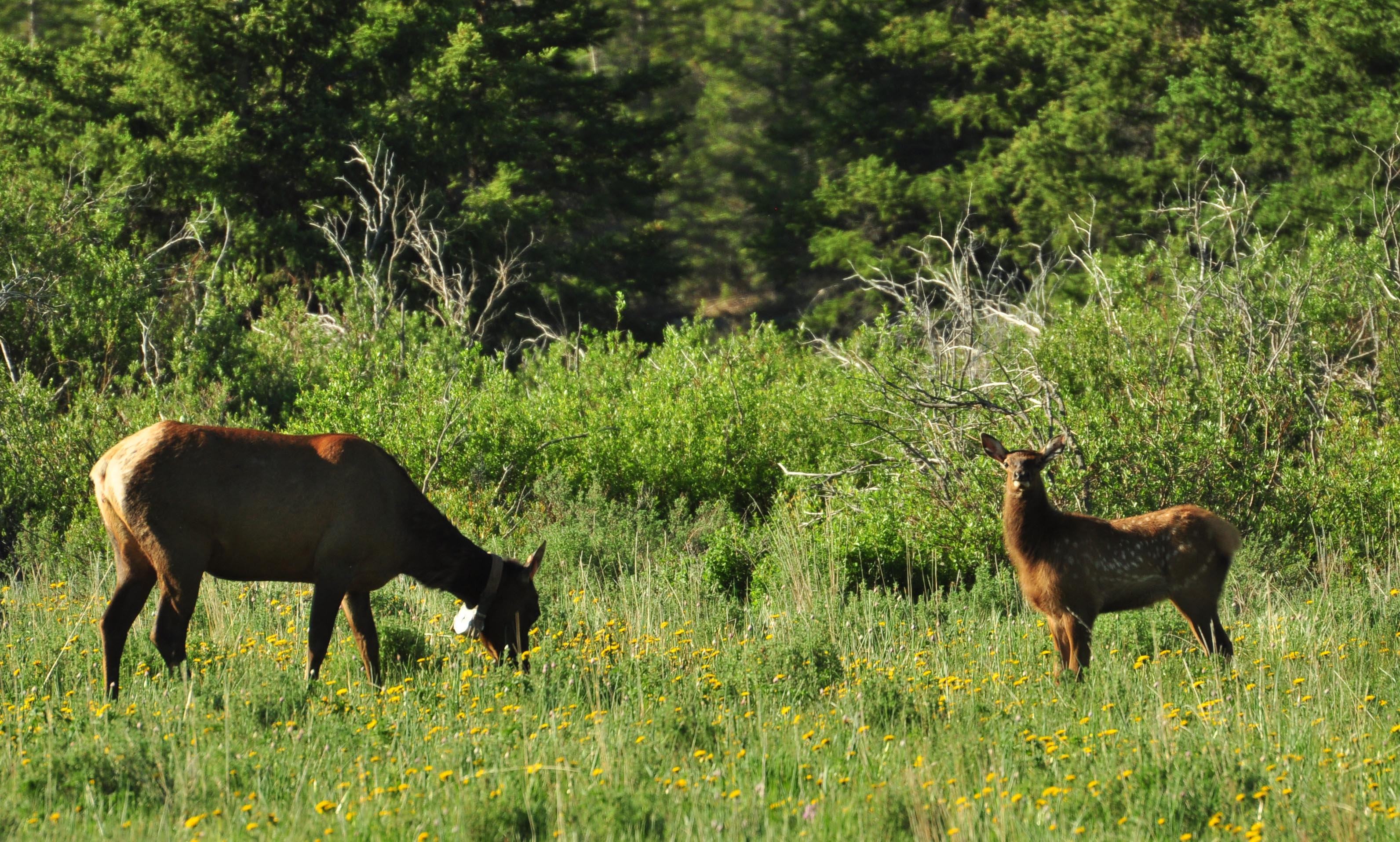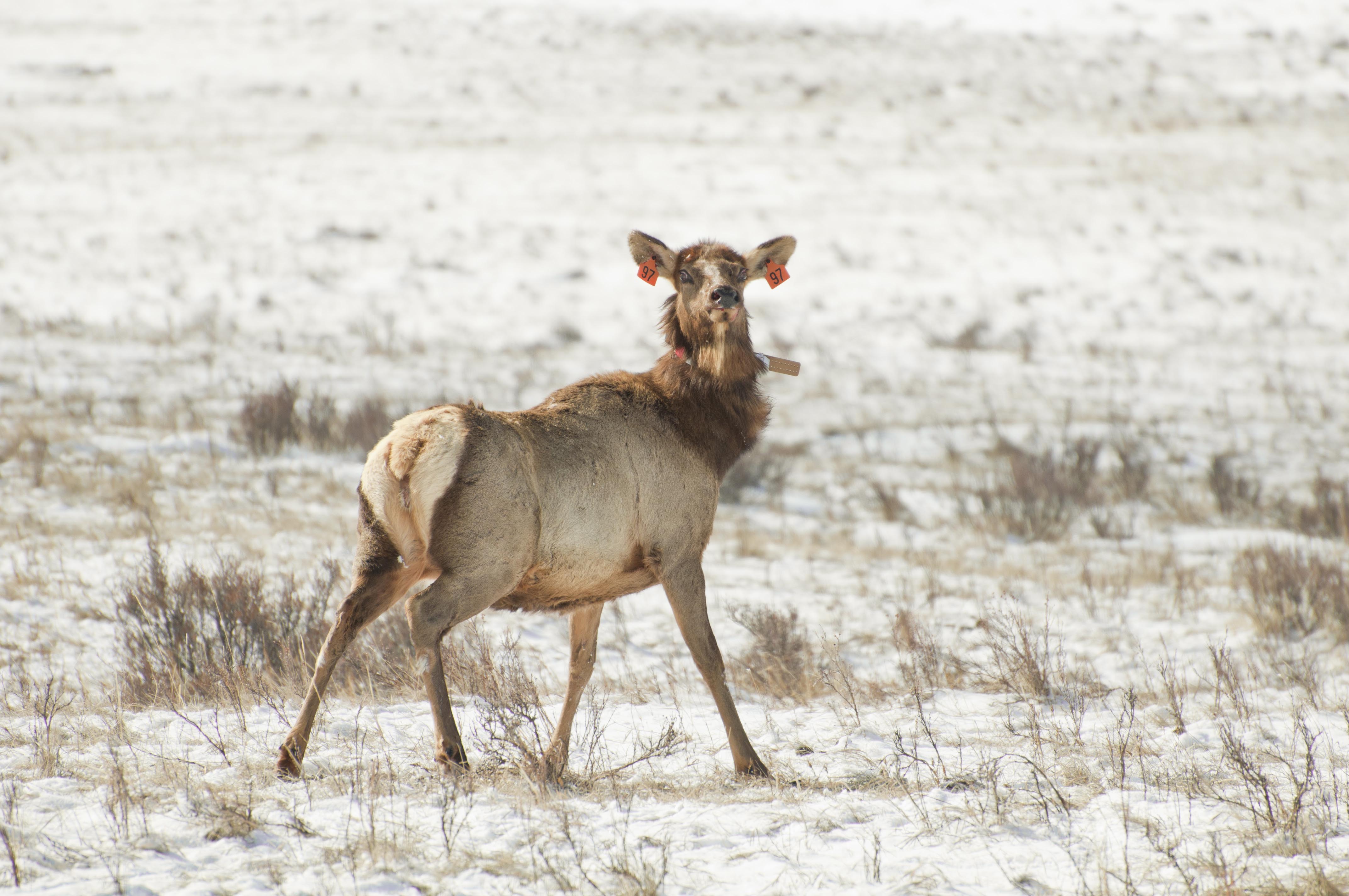May is coming, flowers are blossoming, birds are singing and calving is approaching for elk. On the Homo sapiens sapiens side, things are moving too. In fact, the Ya Ha Tinda Elk Project is in the starting blocks for a very exciting season. The goal: catching 20 calves, equipping them with radio-transmitting ear tags, and monitoring the calves as their fates are determined by predators, weather, or disease. Moreover, the squad is not planning on catching just any random calf… Let’s flash back to February and March, 2013….
February and March, 2013 – Adult female elk captures
The team meets in the kitchen at 7:00 every morning. We organize roles and remind everyone of all the safety procedures before starting out to locate female elk. In total, 26 adult cows in good body condition were caught in the cold, winter months of February and March. The elk were chemically immobilized by darting from horseback and outfitted with unique identifying ear tags. After checking for pregnancy, Vaginal Implant Transmitters (VITs) were inserted into none-barren cows. The VITs drop to the ground with the calf during calving, allowing the birth sites to be pinpointed using radio telemetry. VITs are essential for locating neonatal calves in the first hours of life, when they are most vulnerable to predation. Without the aid of VITs, we are not able to assess the effects that birth site selection has on the survival of neonatal elk calves.
VITs are commonly used in elk and deer and do not affect pregnancy or survival of the cow and the calf. VITs are only used in pregnant elk; thus, assessing pregnancy was a crucial step during the immobilization process, and was supervised by qualified veterinarians.
May and June, 2013 – Calf captures
This new calf survival component of our long-term monitoring efforts is vital to our understanding of the factor(s) affecting the Ya Ha Tinda elk herd’s decline. Recruitment corresponds to young individuals being added to the population after they’ve made it through their first year of life. Thus, to ensure persistence or growth of a population, recruitment must be equal to or greater than adult mortality. Only 4% of calves survived to the end of last year ( winter 2011-2012) and only 8% survived this year (winter 2012-2013), which is not enough to balance the adult mortality. But why are there so few calves? Is it a fertility problem, really high predation pressure, disease??
Remember the VITs inserted in the cows? This is when they come in really handy. In the spring, a team of about 10 people was running around Ya Ha Tinda listening to the VITs’ signals. As soon as the signal’s rhythm accelerated it meant that the VIT was expelled and a calf had been born. A small team of at least two people then followed the telemetry signal leading to the birth site where the calf was soon captured. Using gloves and the utmost caution, each young elk was tagged and measured within 10 minutes. The calves’ ear tags, like the females’ radio-collars and VITs, are radio-transmitting and emit a constant signal, allowing us to track their survival.
Monitoring calf survival
Once the ear tags are out and running, if the calf does not move for more than four hours, the ear tag signal changes to a double pulse, which indicates a mortality has possibly occurred. Once this signal is heard, a big team of people is composed, which then follows the signal carrying a shotgun, bear spray, and other safety equipment. Upon arriving at the carcass, investigators look for clues and signs indicating the cause of death. Investigating mortality sites immediately after death is crucial, before the evidence is scattered by predators or scavengers. Only 16 calves were captured in spring 2013, and only 5 of them are still alive the following November. Because the sample size is really small, it is hard to conclude what most impacts calf survival yet. This project will go on for 3 more years in efforts of increasing the sample size and drawing real conclusions about the decline of the Ya Ha Tinda herd.
We are hoping that you will stay with us for the rest of the adventure…



